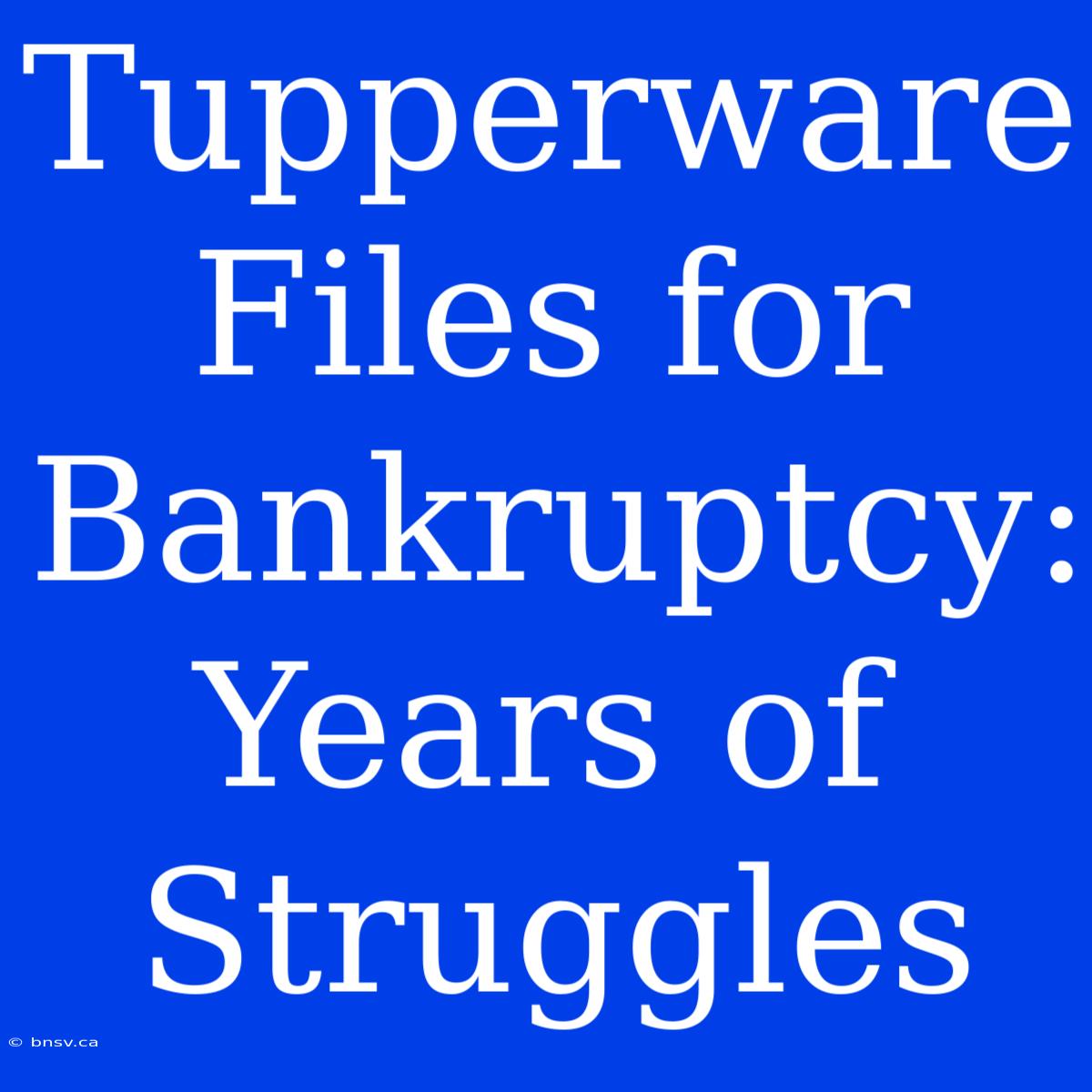Tupperware's Tumble: A Legacy of Plastic Faces Bankruptcy
Has the iconic brand of Tupperware reached its end? The news of their bankruptcy filing has shaken many, sending ripples of nostalgia and concern through the consumer landscape. But how did this once-thriving household staple find itself in such a precarious position?
Editor Note: Tupperware's bankruptcy filing today marks a significant moment in the company's history. Once a symbol of postwar American optimism and a staple in kitchens across the globe, the brand has struggled to adapt to evolving consumer trends and the rise of online shopping. This article delves into the factors contributing to Tupperware's decline, exploring the challenges faced by the company and its future prospects.
Analysis: This guide examines the factors behind Tupperware's bankruptcy filing, exploring the company's long history, its struggles with shifting consumer preferences, and the challenges of its direct-sales model. We analyze the company's financial performance, its attempts at rejuvenation, and the potential implications of its bankruptcy for the future of the brand.
The Legacy of Tupperware
Tupperware's story is inextricably linked to the rise of the American consumer culture in the mid-20th century. Founded in 1946, the company quickly gained prominence with its innovative and durable plastic containers, transforming food storage and revolutionizing home organization. Tupperware's iconic products, paired with its direct-selling model, facilitated a cultural phenomenon of "Tupperware parties," bringing neighbors together to showcase and purchase the latest offerings.
Key Aspects:
- Direct Sales Model: Tupperware's success relied heavily on its network of independent sales consultants who hosted parties and demonstrated the products.
- Product Innovation: The brand consistently introduced new and innovative products, such as the iconic "Wonderlier" bowl and the "Tupperware Freezer Mate."
- Brand Recognition: Tupperware became synonymous with quality, durability, and airtight food storage, garnering widespread recognition and loyalty.
The Cracks in the Plastic
While Tupperware enjoyed unparalleled success for decades, the 21st century brought a series of challenges:
Shifting Consumer Preferences: Modern consumers increasingly prioritize convenience, disposability, and sustainability, leading to a decline in demand for traditional plastic containers.
Rise of Online Shopping: E-commerce platforms offered a wider variety of products and greater convenience, disrupting Tupperware's direct-sales model.
Economic Downturns: Recessions and economic instability significantly impacted consumer spending, impacting Tupperware's sales figures.
Competition from Other Brands: Tupperware faced increasing competition from other brands offering similar products, eroding its market share.
Challenges in Adaptation: Tupperware struggled to adapt to these changes, failing to fully embrace online sales or innovate its product lines to keep up with evolving consumer trends.
The Future of Tupperware: A Balancing Act
Tupperware's bankruptcy filing presents a critical juncture for the brand. The company must navigate a path that balances its storied legacy with the demands of the contemporary market.
Key Considerations:
- Redefining the Brand: Tupperware needs to reinvent itself, perhaps exploring new product categories or partnering with other brands to expand its reach.
- Embracing Digital Sales: Integrating online sales into its strategy is crucial, allowing for broader market access and greater consumer engagement.
- Focusing on Sustainability: Tupperware must address environmental concerns by exploring sustainable packaging options and promoting recycling initiatives.

